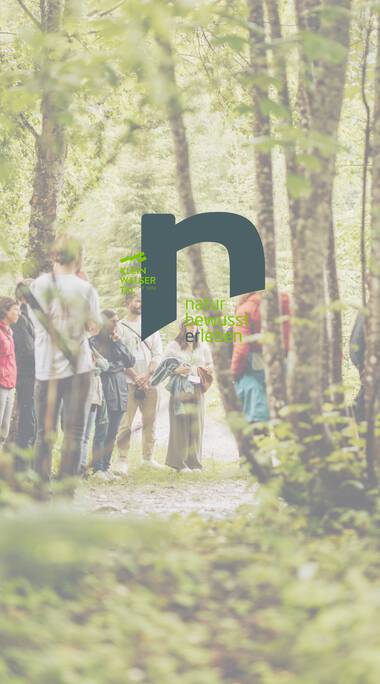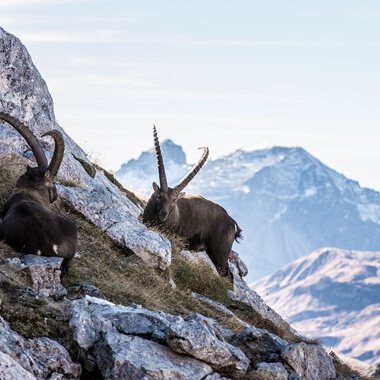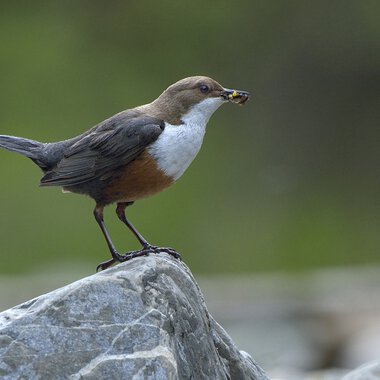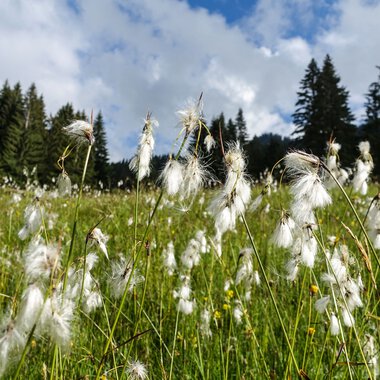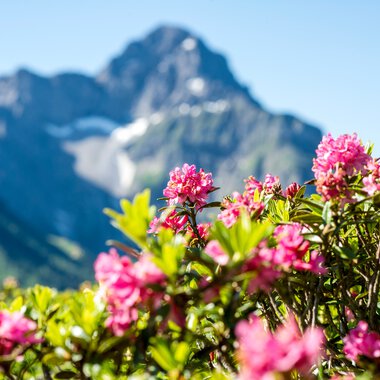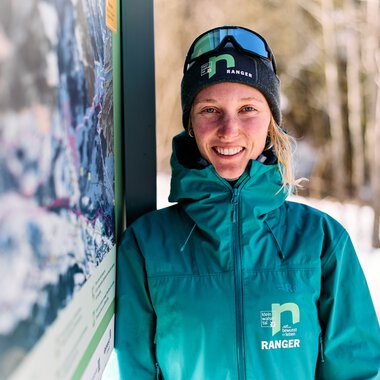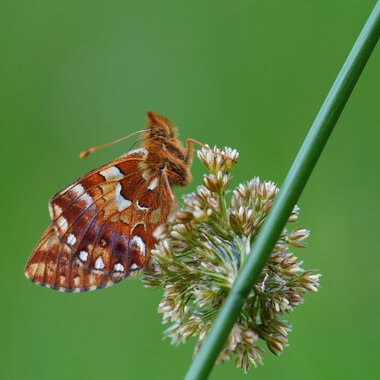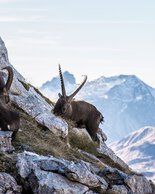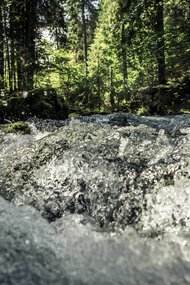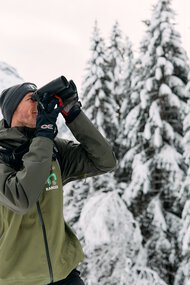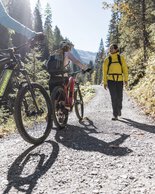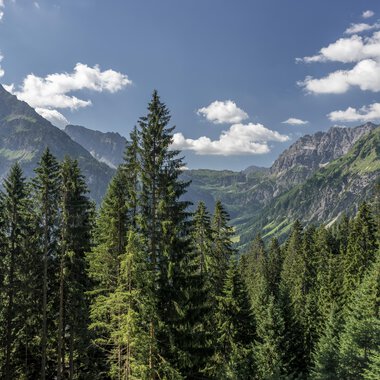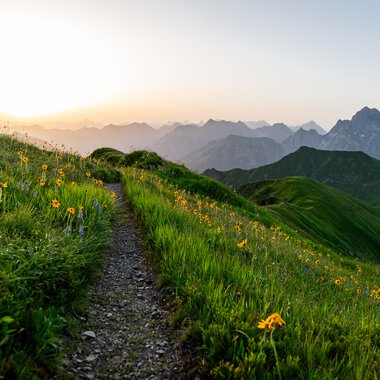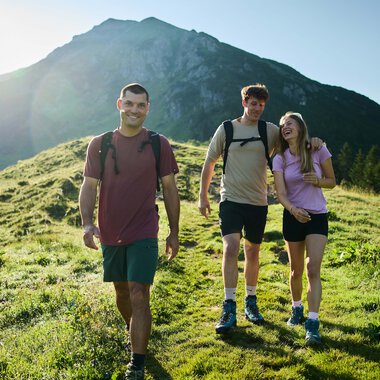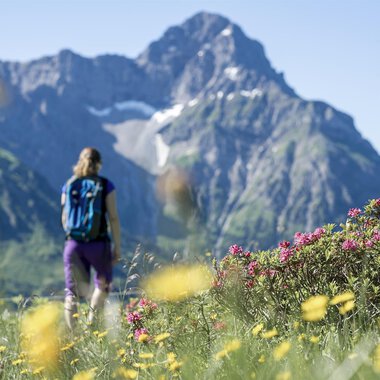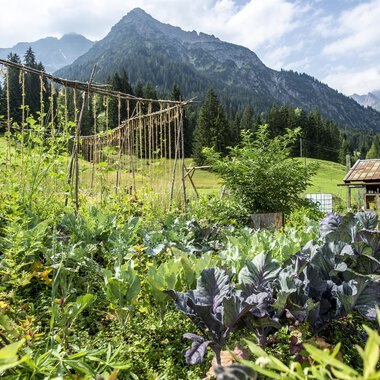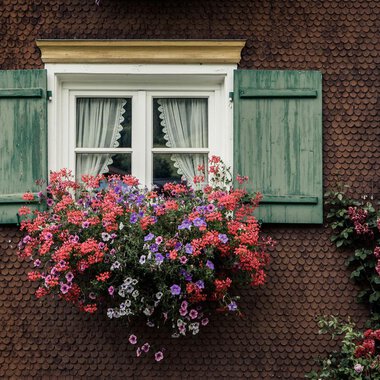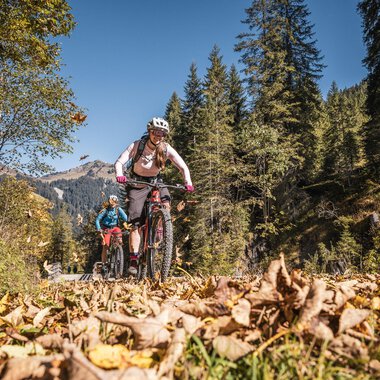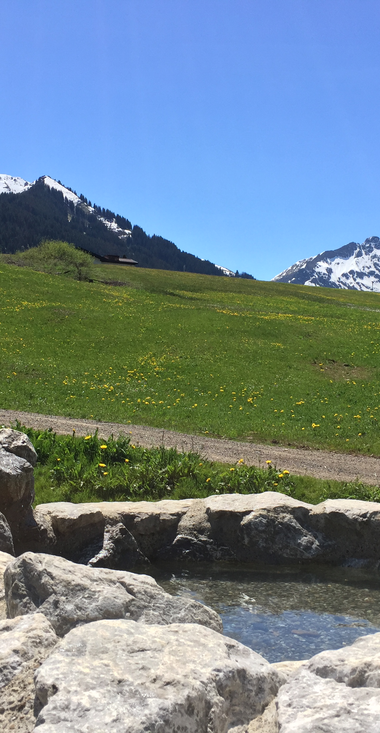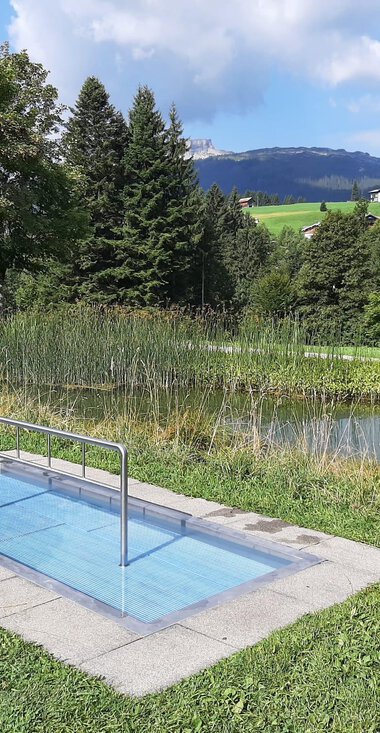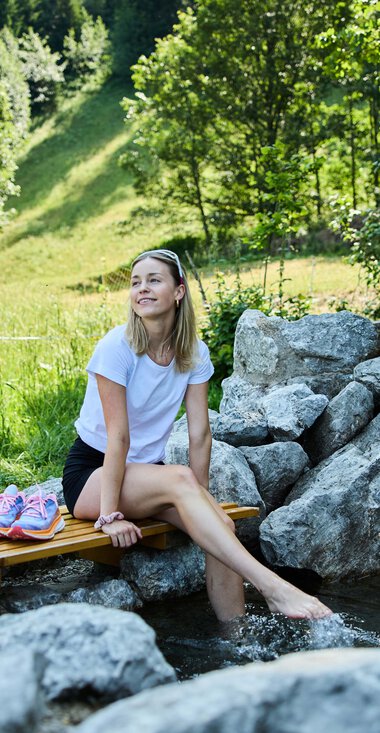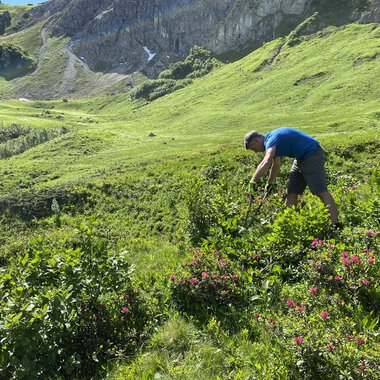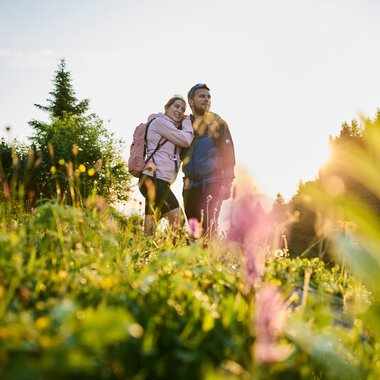Preserve habitat Background to the initiative
Experience nature consciously is an initiative in Kleinwalsertal with the aim of giving more weight and attention to the value of nature for people. To this end, it focuses on two main areas: guiding recreationists and leisure sports enthusiasts and raising awareness and imparting knowledge.
Because nature is so much more than just the backdrop for unforgettable mountain experiences. It is a habitat for animals and plants. It provides drinking water and supplies us with high-quality food. Not only does it provide valuable raw materials such as wood, but it also protects against avalanches and mudslides and regulates the climate.
Everyone can help! How you can make a contribution
One thing is certain, together we can achieve more. With a little consideration and a few tips, your next time out hiking or biking, skiing or snowshoeing will leave smaller traces behind.
- Respectful in nature: stay on marked paths and routes, avoid twilight and night times, take your garbage with you, find out about tips on nature toilets and what applies to your four-legged friend.
- Be aware of each other: show consideration for others and appreciate the interplay between the cultural and natural landscape.
- Experience with foresight: Plan your tours carefully and conscientiously.
In harmony with nature Tour tips in summer
Everything you need to know Important information for tour planning
To be remembered Unforgettable experiences around nature
You never stop learning! Did you already know?
The time change leads to more wildlife accidents
On 30 March 2025, the clocks went forward by one hour again. Since then, we humans may find it a little harder to get out of bed in the morning, as our rhythms first have to get used to summer time again. The time change can even be dangerous for wild animals. The daily routine of wild animals depends on the light conditions. They know when it is time to become active, for example to forage for food or reproduce, and have a well-functioning internal clock. However, this internal clock does not recognise the time change.
This is why the animals are surprised by the change in human behaviour after the time change. While they were able to cross roads undisturbed in the mornings during the winter, traffic increases again in the summer. Especially in spring, when the animals change from winter to summer, they have to cross roads more often. In combination with the unexpected traffic between six and seven o'clock, this leads to an increase in wildlife accidents after the time change. To avoid wildlife accidents, drivers should drive carefully and with foresight, especially in the early hours of the morning.
In spring, the owls in Kleinwalsertal mate
There are various species of owl in Kleinwalsertal. The eagle owl is the largest native owl species with bright orange eyes. The pygmy owl, on the other hand, is the smallest of its kind and is characterized by its yellow eyes. The tawny owl is distinguished from its fellow owls by its large black eyes. The long-eared owl is a smaller version of the eagle owl and the great horned owl is known for its whitish, black-rimmed facial veil with yellow eyes.
While the individual species differ in their appearance, they have one thing in common: in spring, their mating season begins and the males call for courtship to find a female. The eagle owl and tawny owl then call the familiar owl sounds: “Hu-hu-hu-huuuu”. The pygmy owl, on the other hand, is known for its characteristic high-pitched whistling sounds. The long-eared owl cannot be heard very far with its monotonous, muffled “huh”. The great horned owl makes itself heard with its long, hollow-sounding "pu pu pu pu pu" calls.
Once a pair has found each other, they look for a safe place to nest. Depending on the species, owls nest in tree hollows or in rock faces. After a few weeks, the young hatch, which initially have a white downy plumage. If you are outside in the evening or at dusk, you may be lucky enough to hear an owl. Can you recognize which owl species it is by its calls?
The weasel is the smallest carnivore
Spring is here, the days are getting longer again, temperatures are rising and nature is adapting. While some animals wake up from hibernation, others say goodbye to their white winter coat and dye their fur dark again. This includes the weasel, also known as the small weasel, which, like its relative the large weasel, belongs to the marten family.
A special feature of the weasel: while animals at higher altitudes have white fur in winter, those at lower altitudes keep their brown fur with a white underside, separated by a jagged line, all year round. Another exciting characteristic: the weasel is the smallest predatory mammal in our latitudes. Despite its small size, it is a skillful carnivore that feeds primarily on voles and other small mammals, which are considered pests. Measuring between 11 and 26 centimetres, the weasel prefers dry meadows, fields and sparse forests as its habitat. It is both diurnal and nocturnal and can live up to five years - although in the wild this is often significantly less.
If you look closely, you may be lucky enough to see a weasel hunting in spring - agile, nimble and always on the lookout for its next meal. And if you want to help the species a little, you can build hiding places in your garden or property in the form of rock piles, piles of leaves and hedges.
Why are there forest-wildlife sanctuaries?
Cold and food shortages - winter is a challenge for forest animals year after year. In order to survive in these adverse conditions, animals such as red deer adapt their metabolism and activity phases to winter and retreat. The energy level of the animals is very low in winter, which is why they react very sensitively to disturbances during this time. In order to provide the animals with a place to retreat and protect them from disturbances, experts from the fields of sport, tourism, forestry and hunting have developed so-called forest-wildlife sanctuaries. In contrast to official wildlife sanctuaries, this is a voluntary measure or a recommended rule of conduct.
Regardless of the snow conditions, wild animals generally struggle with a lack of food in winter. If they are startled at their retreat or during their resting time, e.g. by winter sports enthusiasts, this can cost a lot of energy and have life-threatening consequences. This is why it is particularly important to respect the protected areas and rest periods of wild animals during this time. Since this winter, the period of validity for the forest wildlife sanctuaries has been set from December 15 to April 30. The “Natur bewusst erleben” (Experience nature consciously) overview boards show both wildlife reserves and forest-wildlife sanctuaries. There you can find information on the correct route to take.
Avalanche protection as a natural monument
Did you know that avalanche protection not only saves lives, but also tells a piece of history? As the natural avalanche protection provided by forests is not sufficient in many regions, including Kleinwalsertal, appropriate protective structures were built as early as the 19th century. While we are most familiar with steel snow bridges from the ski resorts, walls and earth terraces as well as gabions, wire rope baskets filled with stones, were built in the past. Walls and gabions have a supporting function and thus hold back the snow or can buffer the pressure of large masses of snow. Earth terraces can reduce sliding snow avalanches.
These three types of avalanche barriers were also used on the Walmendingerhorn, for example, to protect the habitat of the inhabitants of Kleinwalsertal. They still characterize the landscape there today and can be seen as relics from that time as so-called technical cultural monuments.
But what is a cultural monument? A cultural monument only occurs in certain regions and is a special feature. It also shows how people lived and did business back then. They are therefore of cultural significance. The old avalanche barriers on the Walmendingerhorn show how our ancestors protected their habitat, but also how they looked after their fields and pastures. They shape our landscape and culture and have become indispensable. Avalanches have always been a major threat to our habitat. This is why the structures of the past not only serve as protection, but are also important elements of our culture.
